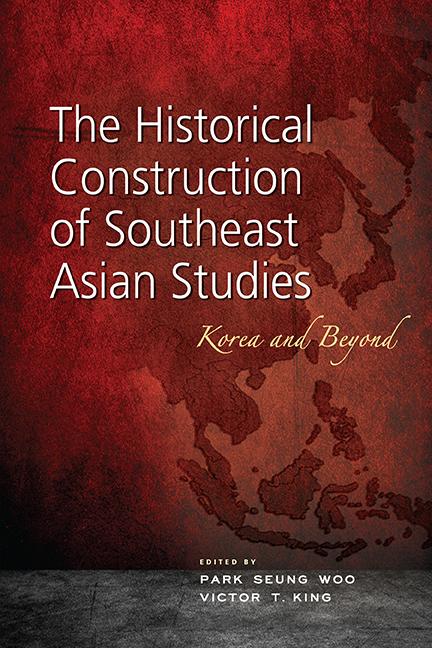Book contents
- Frontmatter
- Contents
- List of Tables
- List of Figures
- Foreword
- Acknowledgements
- About the Contributors
- 1 Introduction: The Historical Construction of Southeast Asian Studies and the Emergence of a Region
- PART I NORTHEAST ASIA
- PART II SOUTHEAST ASIA
- PART III EUROPE
- PART IV AUSTRALIA AND THE U.S.
- 10 A Genealogy of Southeast Asian Studies in Australia: Scholars and Their Works
- 11 Southeast Asian Studies in the U.S.: Construction of Traditions of an Autonomous History, Its Limitations, and Future Tasks
- Index
10 - A Genealogy of Southeast Asian Studies in Australia: Scholars and Their Works
from PART IV - AUSTRALIA AND THE U.S.
Published online by Cambridge University Press: 21 October 2015
- Frontmatter
- Contents
- List of Tables
- List of Figures
- Foreword
- Acknowledgements
- About the Contributors
- 1 Introduction: The Historical Construction of Southeast Asian Studies and the Emergence of a Region
- PART I NORTHEAST ASIA
- PART II SOUTHEAST ASIA
- PART III EUROPE
- PART IV AUSTRALIA AND THE U.S.
- 10 A Genealogy of Southeast Asian Studies in Australia: Scholars and Their Works
- 11 Southeast Asian Studies in the U.S.: Construction of Traditions of an Autonomous History, Its Limitations, and Future Tasks
- Index
Summary
INTRODUCTION: A CRITICAL PROVISO
Southeast Asian studies have developed to become a considerable field of study in Australia. Southeast Asia, as Australia's neighbouring region, has been the focus of national interest and this interest has encouraged considerable research and teaching in Australian universities for several decades. Yet “Southeast Asian Studies” as a whole has never been a unified subject of investigation nor can the study of Southeast Asia be extricated from other specific fields of research. Many of the individuals who have made the greatest contribution to the general field of Southeast Asian Studies have seen themselves primarily as contributors either to a particular discipline such as anthropology, politics, economics or demography or to the study of a particular country within Southeast Asia.
One might go further and argue that Southeast Asia could well be seen as a “transitory” category created in the period after the Second World War. Despite the existence of a political foundation through ASEAN for the present conception of Southeast Asia, views of this grouping of countries could well be reformulated in the future.
Although the category of Southeast Asia may be useful for certain purposes, there are other perspectives from which to view this same collection of countries. At different periods of history, various countries within the region have come under the cultural influence of either India or China and it is still possible to distinguish countries within the region accordingly. It is also possible to view these countries in terms of their predominant language families. Thus most of island Southeast Asia forms part of an Austronesianspeaking world. Similarly it is possible to view these countries in terms of their main constituent religions, in which case, Indonesia and Malaysia in particular form part of a Middle Eastern religious sphere.
This chapter offers a “genealogy” of some of the principal contributors to “Southeast Asian Studies” in Australia, even though many of these individuals would not themselves have identified their contribution as primarily directed to the creation of Southeast Asian Studies as such. In Australia, Southeast Asian Studies began through efforts to build disciplinary expertise on particular countries. In some cases, this involved a clear governmentsupported effort.
- Type
- Chapter
- Information
- The Historical Construction of Southeast Asian StudiesKorea and Beyond, pp. 349 - 398Publisher: ISEAS–Yusof Ishak InstitutePrint publication year: 2013



